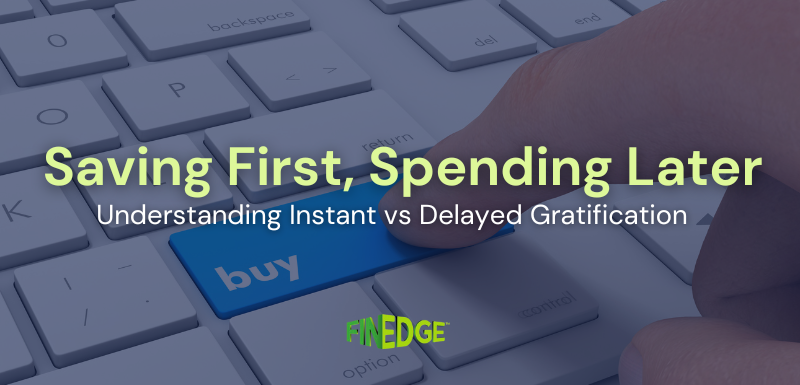The Dangerous Rise of Finfluencer Advice and How to Spot Red Flags
- Finfluencer content often prioritizes clicks and views over financial accuracy.
- Misleading advice can derail long-term wealth creation.
- Red flags include guaranteed returns, urgency-driven content, and lack of credentials.
- Professional investing prioritizes structure, suitability, and safety not hype.
Finfluencers are everywhere, but not all advice online is safe. Behind the flashy claims often lie risks that can harm your long-term wealth.
Why Finfluencer Advice Is Growing and Why It’s Risky
The rise of financial influencers in India isn’t surprising. Over the last few years, platforms like YouTube, Instagram, and Twitter have been flooded with short, eye-catching content that makes money management look simple and exciting. For younger investors, especially those just starting their financial journey, these bite-sized videos feel more relatable than formal financial advice.
But this popularity comes with serious risks. Most finfluencers aren’t SEBI-registered and have no regulatory oversight. Their recommendations are rarely backed by accountability or disclosures. In fact, much of their income comes from views, sponsorships, or affiliate links with platforms that pay them commissions. This means accuracy often takes a back seat to virality.
The result is troubling: many investors end up acting on advice that was never meant for their unique situation. Portfolios become overloaded with trendy, high-risk assets, investors develop unrealistic expectations, and in the worst cases, people face financial losses that could have been avoided with proper planning.
The Allure of Finfluencer Advice: Why People Fall for It
It’s easy to see why finfluencer content is so appealing. Their videos simplify complex financial topics into easy-to-digest soundbites. Their tone feels casual and relatable, often more like a friend’s suggestion than financial advice. Many use aspirational stories or emotional hooks from “I made ₹1 crore in three years” to “Don’t miss this once in a lifetime opportunity.” These narratives play directly into investor psychology.
Behavioral finance explains why this works. People are naturally drawn to shortcuts, FOMO (fear of missing out), and stories of quick success. The large follower base of influencers creates the illusion of authority, making their advice feel trustworthy even when it isn’t. Unfortunately, this combination of relatability and misplaced confidence often leads people to act first and think later.
How Finfluencer Advice Can Derail Your Goals
The danger with finfluencer content is not that it exists, but that it often presents a distorted view of reality. Complex topics such as diversification, asset allocation, or risk management are reduced to oversimplified hacks that ignore nuance. Many influencers promote trending products like cryptocurrencies, small-cap funds, or derivatives framing them as golden opportunities without highlighting the volatility they carry.
Some content goes further, making claims of guaranteed or “safe” high returns, which no legitimate financial product can ever provide. Recommendations may also be driven by hidden incentives, such as affiliate commissions, without any disclosure to the audience. Crucial details like tax implications, investment horizons, or suitability for different investors are left out entirely.
The impact is predictable: investors develop a false sense of confidence, believing wealth creation is quick and formulaic. They end up with misaligned portfolios, unnecessary risks, and sometimes painful financial losses that could have been avoided with informed decision-making.
Example
Consider the story of a young professional who invested heavily in a trending small-cap fund after watching a series of influencer videos. Initially, the investment seemed to work, delivering strong short-term gains.
But when the market corrected sharply, nearly a third of the portfolio’s value was wiped out within months. The influencer had already moved on to promoting the next hot product, leaving investors to deal with the losses alone.
This kind of experience is becoming increasingly common. The lesson is clear: hype-driven investing cannot replace structured, goal-based planning.
Red Flags to Watch Out For
Spotting red flags can save you from falling into the trap of hype-driven investing. Be cautious of anyone making extraordinary claims about wealth creation in impossibly short periods. Statements like “I made ₹1 crore in three years” usually highlight survivorship bias and ignore the risks that others faced.
Blanket recommendations such as “everyone should invest in this product now” are another warning sign, since no financial solution is universally suitable. Promises of “no risk, only returns” are fundamentally false risks and returns always go hand in hand.
The absence of professional credentials or disclosures about partnerships should also raise eyebrows. Finally, urgency-driven or emotional messaging phrases like “don’t miss out” or “last chance” are designed to trigger impulsive decisions, not thoughtful financial planning.
Why Professional Guidance Matters More Than Ever
Social media content can be useful for awareness, but it cannot replace structured financial planning. Qualified, SEBI-registered professionals bring accountability, regulation, and the responsibility to put investors’ interests first.
The biggest difference is personalization. Unlike finfluencers, who promote the same “hot idea” to everyone, professionals design strategies tailored to your needs and goals whether it’s retirement, buying a home, or funding a child’s education. They build portfolios based on your time horizon, risk tolerance, and evolving circumstances, not on what’s trending online.
Advisors also help your portfolio grow steadily by diversifying across the right mix of assets, rebalancing when needed, and protecting you from impulsive, FOMO-driven decisions. Most importantly, they provide behavioral support during volatile markets, ensuring you stay disciplined and consistent rather than reacting emotionally.
In short, where finfluencers focus on popularity and hype, experts focus on suitability, structure, and long-term wealth creation aligned with your personal goals.
How to Use Finfluencer Content Wisely
You don’t need to stop following financial content creators entirely. In fact, social media can be a great starting point for learning the basics and sparking curiosity. The key is to treat it as awareness, not action.
Before acting on any advice, cross-check the information with credible financial sources. Ask yourself whether the recommendation aligns with your personal goals and time horizon. Look for long-term data rather than short-term success stories. And most importantly, consult with a qualified professional before making big financial decisions.
By shifting your perspective, you can enjoy the accessibility of social media without falling into the trap of treating it as a substitute for personalized advice.
Final Thoughts
The rise of finfluencers reflects how accessible financial information has become and that’s a good thing. But accessibility should not be mistaken for reliability. Hype, urgency, and one-size-fits-all solutions are not the path to building lasting wealth.
Instead, the cornerstones of successful investing remain unchanged: patience, discipline, and suitability. Use social media content to learn, but don’t act on it blindly. Long-term wealth is created by aligning investments with your goals, not with viral trends.
FAQs
Your Investing Experts
Continue Reading
Types of Gold Investments: A Complete Guide for Indian Investors
Gold continues to be one of India’s most trusted assets, but the way we invest in it has evolved. With multiple formats now available each serving a different purpose it’s important to know where gold truly fits into your financial plan. This guide simplifies your options so you can choose the format that aligns with your goals, behaviour, and long-term strategy.
Instant vs Delayed Gratification: A Behavioural Lens on Long-Term Wealth Creation
Wealth creation is not driven only by market movements or income levels, it is equally shaped by everyday behavioural choices. The balance between instant and delayed gratification often determines whether an investor accumulates meaningful wealth or repeatedly falls short of long-term goals.
What Are Bonds in India?
From government to corporate and tax-free bonds, understand what bonds really mean and how they function within India’s financial ecosystem.
.png)
.png)

